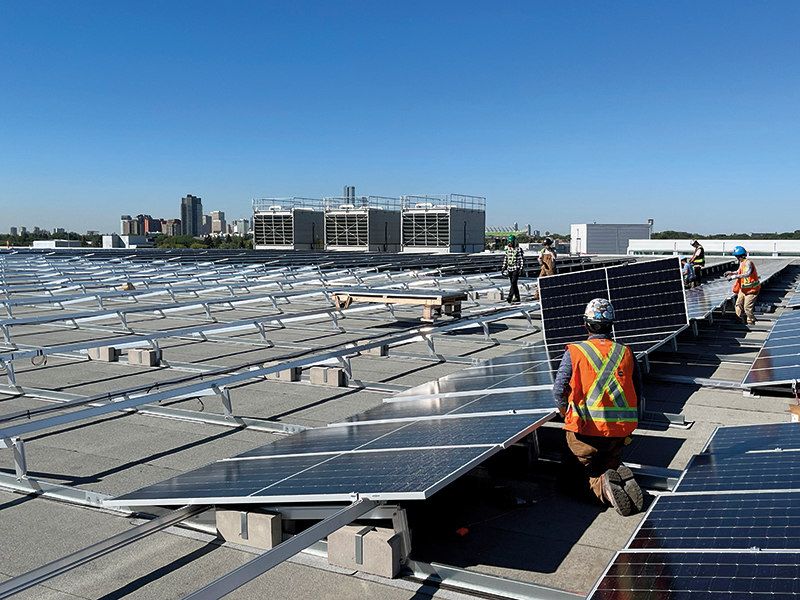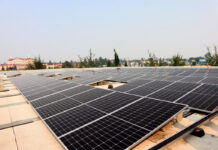Creating an Inclusive Approach for the Road to Net Zero
By Sagar Kancharla
In a country dotted by hundreds of remote communities, it’s difficult to plan an energy transition that leaves no one behind. But in the national and global push towards net zero, it’s vital to ensure that communities, no matter where they are located, have the same level of access to a safe and secure supply of clean energy.
The question, of course, is how. How do we prioritize communities of 50 on the same level as communities of 500,000? How do we provide support for all green energy technologies and innovations? How do we decide who gets what, and when? It is the challenge of a just energy transition, but a challenge that must be overcome.
If a fair transition is not pursued, communities of low-income could be responsible for fewer emissions but could be more vulnerable to a lopsided burden of climate change impact.
Understanding the Current Landscape
Canada is fortunate to have diverse and clean natural resources that contribute to clean power generation. We have a relatively reliable and clean grid now, but there are areas across the country that either still need access to green energy or recognize further need for additional power to meet future electrification demands.
To chart a course towards a just energy transition, we need to look at where fossil fuels are generating energy and then understand what opportunities are present (and when) to remove the use of carbon-emitting resources.
Oil and gas resources are widespread throughout Canada. They have been vital in energizing the country, and many of its businesses, operations and mobility for decades. Oil has been used throughout Canada, and sold to overseas markets, while natural gas has helped sustain the energy grids for power generation and heating purposes especially. Diesel has been the primary source of power for Canada’s remote communities, with thousands of litres flown or floated to communities each and every year. For the electricity requirements, clean sources like hydro power and nuclear power have supported in having a clean grid for decades. But there are still four provinces that haven’t completely phased out the use of coal-fired power generation: Alberta, Saskatchewan, New Brunswick and Nova Scotia. However, by 2040, coal power is expected to amount to less than one per cent of the Canada’s total energy generation.
Even though Canada has come so far already, there is still a number of challenges ahead.
Where Should We Begin?
In a word, everywhere. Because to create a transition that is just, all of the current issues need to be addressed, and everyone impacted needs to be part of the discussion.
At a basic level, to meet the energy demands and reduce emissions, we expect increased electrification, with power sourced from wind, solar, biomass, hydro and nuclear. No one of these clean energy technologies will be able to meet Canada’s entire electricity demand alone, so it will be important to employ each of these where it is the most viable solution.
For sectors where natural gas remains to be the preferred fuel, carbon capture, utilization and storage (CCUS) will be the complementing technology to capture emissions. For hard-to-abate sectors and where electrification is a challenge, technologies such as hydrogen will find usage. Hydrogen feedstock could be clean electricity or natural gas with carbon capture. Renewable natural gas is an option as well, and will be utilized in regions of the country where a reliable volume can be supplied.
What’s important is to analyze each of these solutions for every place where carbon-emitting fuels are being used. Canada is blessed with abundant clean resources like wind, solar, hydro and technological expertise like hydrogen, carbon capture, nuclear and other emerging technologies. The success is likely to come from taking a regional approach to decarbonization based on multiple criteria. These include natural resources, land, talent, community impact etc. This will help to frame solutions that put people and communities first.
A regional analysis is also an excellent tool for collaboration amongst impacted stakeholders. Not only can you gain consensus on the best approach to meet current and future clean energy needs, but it can also bring non-traditional partners to the table that can help address some of the shortages, such as academic institutions who can work to build training courses for the needed talent pool.
Additional Resources Needed
Collaboration among local and regional partners is invaluable, but there are other supports that are needed to provide the right localized solutions for a just energy transition.
Three of the biggest challenges that exist relate to affordability, the pace of energy transition, and the equitable sharing of benefits. The cost of the transition to renewable energy can be high, but it does come with significant economic benefit. Demonstrating the economic benefits, and the environmental benefits, at the community level will support any ask involving government funding. If the private sector must be engaged, knowing how the local economy will benefit from the new energy resources will appreciate whether there will be a sustainable tax base that can pay for the asset over time. Where the asset’s purchase isn’t viable, government supports need to be introduced to bridge the gap. This will ensure that communities don’t get left behind in the energy transition just because upfront or short-term funding solutions aren’t fully available.
It is possible to deliver on a just energy transition in Canada. By considering the communities already most impacted, taking a regional approach, analyzing what the most practical clean energy resources are for supporting that collaboration, and having government support to cover the fiscal shortfalls, no communities will be left behind. This moment provides Canada a significant opportunity for economic prosperity and health living on sustainable basis for all. While the transition is underway and resilient infrastructure is being developed, vulnerable communities need to be assisted with emergency preparedness and adaption to the effects of climate change.
Everyone should have access to clean energy, regardless of where they live. It’s time to start working together to make this a reality from coast-to-coast-to-coast.
WSP helps companies, institutions, and organizations across Canada, and around the world, chart their path to a net zero future. To learn more, visit: https://www.wsp.com/en-ca/hubs/advisory
Sagar Kancharla is a Director, Energy Transition Advisory & Investments, for WSP in Canada
Featured image: (City of Edmonton)

















